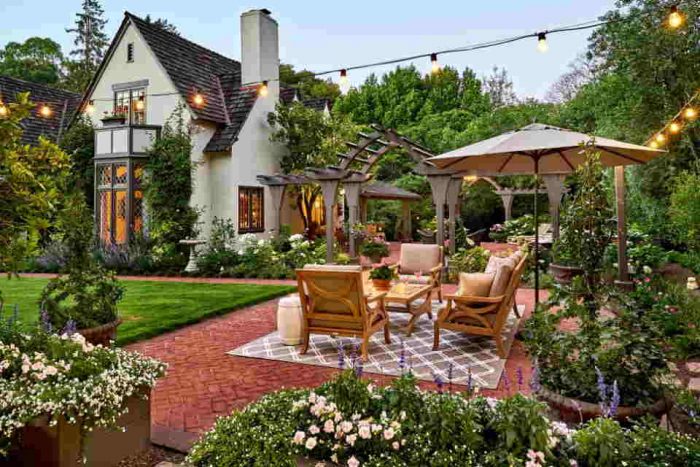One feature of any landscaping design which always requires due care and attention is lighting. The fact that there are an almost unlimited number of different lighting types, numerous uses for lighting, and multiple ways in which lighting can be used in landscaping design, is positive. However, it also creates a problem in the sense that you have to narrow down so many choices.
If you want to have lighting in your garden and want your landscapers to include them in any landscape design they create, then you both have decisions to make. That being said, you might choose to hand over all the decision making to them and to include what lighting they think is best. However, would it not be better if you had some input, as ultimately it is you who will be using your new garden, not your landscaper?
For that reason, it is best that you at least have some say in what lighting is going to be included in your new garden design, and so here are some thoughts and ideas on what lighting can be used in a landscape design.
Where To Include Lighting
The first decision you might wish to make is exactly what areas of your new landscaping you wish to light. Some of this may be driven by logic and safety concerns, and some are based upon aesthetics and visual appeal. Some questions to ask yourself in deciding what to light include,
• What features of your landscape design do you like best and want to highlight?
• Which areas require lighting to make them safe? e.g. pathways, steps
• Are there any features whose appearance would be enhanced by lighting them?
• Are any areas/features hidden from view if they are not directly lit?
Lighting Effect Options
Within landscaping design, there are some tried and trusted lighting effects that are ideal for gardens.
• Silhouetting: Perfect for larger features and features with a definitive shape where a light installed behind them creates an attractive outline.
• Grazing: Used to light hardscapes such as pathways and walls, the effect is created using a small light close to the feature that points up or down to highlight the texture.
• Moonlighting: Yes, it is meant to recreate the light of the moon. Usually done by placing several small lights in a tree that point towards the ground.
• Uplighting: Used frequently in landscape design, this uses lights pointing upwards to highlight features including statues, trees, and decorative walls.
• Washing: Used for hardscapes, lighting is placed several inches away and spreads light across a greater area of their surface than grazing does.
Types Of Lights Used In Landscape designs
The specific lighting types used in landscape design fall into one of six categories.
• Hardscape Lights: Installed on walls, benches, and railings, they are used for grazing or washing effects.
• Path Lights: Come in all shapes and sizes and are used to create a glowing light effect on pathways and other features.
• Post Lights: As the name suggests they are used on posts to light driveways, paths, gates, and decking. Also known as pier mount lights.
• Spotlights: Extremely versatile, they produce a single beam of light to highlight a specific area or feature.
• Step Lights: Small lights and energy-efficient, they are, not surprisingly, used to light steps.
• Well Lights: A form of spotlight, but mounted on the ground so that their light is thrown upwards onto a feature.

